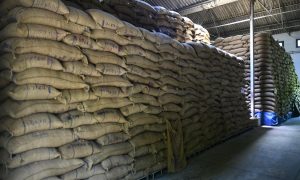GEMA urges govt to increase ethanol blending

GEMA has urged the government to raise ethanol blending from 20% to 30% to boost farmer incomes, rural development, and energy security. The association said grain-based ethanol supports small farmers by ensuring stable demand. It highlighted job creation and economic benefits, calling for FFVs, SAF research, and continued support for the ethanol program.
The Grain Ethanol Manufacturers Association (GEMA) has urged the Indian Government to raise the ethanol blending from the current 20 per cent to 30 per cent, emphasizing that such a move would further boost farmers’ incomes, enhance rural development, and strengthen the country’s energy security under the Atmanirbhar Bharat initiative.
Extending its appreciation to the Prime Minister and the Government of India for the visionary Atmanirbhar Bharat mission, GEMA said that this national mission has accelerated India’s economic development by promoting domestic manufacturing, advancing energy security, and fostering rural prosperity.
One of the most impactful pillars of this initiative has been the policy to replace petrol with domestically produced ethanol. As a 100% indigenous fuel, every litre of blended ethanol directly reduces fuel imports and strengthens India’s economy.
India has demonstrated remarkable capability by increasing ethanol blending from 5% to 20% in just five years, reflecting the country’s entrepreneurial spirit and the confidence of Indian industry. This achievement has also unlocked immense opportunities for the farmers’ community, especially for coarse-grain and marginal farmers.
According to the GEMA, the grain-based ethanol policy is fundamentally designed to support small and marginal farmers growing maize, sorghum, guar, and other coarse grains. These crops, once considered low-value, have now become engines of economic upliftment through the Ethanol Blending Program (EBP). With increasing demand for grain as feedstock, farmers have found a stable, assured, and remunerative market for their produce.
According to Dr. C.K. Jain, President, GEMA, as a result, farmers are now receiving better prices for their coarse grains, and have motivation to increase cultivation, productivity, and quality. There has also been a substantial rise in rural employment and local economic activity as grain ethanol units serve as anchors of rural development, generating jobs, creating value chains, and ensuring continuous income flow to farming households.
Ethanol blending today has increased by a significant margin, too. At present, the 20% blending program consumes approximately 200 lakh tonnes of grain, reflecting India’s growing surplus and farmers’ enthusiasm to expand production further. This makes it evident that our farmers are the primary beneficiaries of this program, while ethanol manufacturers are playing an enabling role by converting agricultural produce into clean and sustainable fuel.
Along with foreign exchange savings and environmental benefits, the primary mission of the ethanol blending program remains enhancing farmers’ income, strengthening rural India, and building a truly self-reliant nation.
According to the GEMA, to further strengthen farmers’ incomes and rural development, it is essential to:
–Increase ethanol blending from 20% to 30%, similar to the model adopted in Brazil
Accelerate the introduction of Flexible Fuel Vehicles (FFVs), enabling the use of higher ethanol blends to provide long term confidence to farmers and industry.
–Accelerate research for the production of Sustainable Aviation Fuel (SAF)
–Expedite the program to blend ethanol into diesel
–Safeguard and support the grain-based ethanol sector, ensuring continuous demand for farmers’ produce
–Continue prioritizing farmers, as they are the core stakeholders and the biggest gainers from the program
To Read more about Ethanol Industry & Bio Energy News, continue reading Agriinsite.com
Source : Chinimandi















